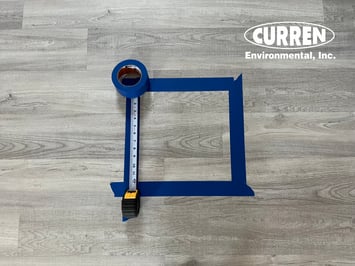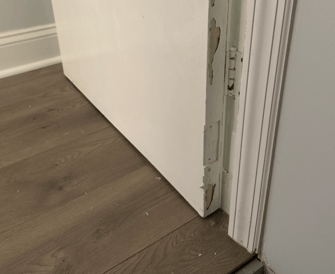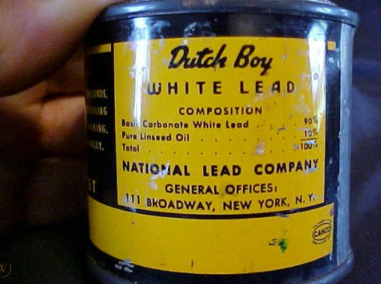HUD's New Final Rule, 24 CFR 35, dictates that lead dust should be below the following standards:
Less than 10 µg/ft2 (micrograms of lead per square foot) on floors, 100 µg/ft2 on windowsills.
100 µg/ft2 on window troughs

When a lead wipe sample fails, it indicates that lead dust is present on the surface sampled.
The lead risk assessor should be able to point to the causes of the wipe failure so appropriate corrective action can be implemented. To be practical, you are not wipe sampling when deteriorated paint is present. So, when a wipe sample fails you must look to see how many failed. Is it systemic through the property or in an isolated area? So if you have four (4) floor samples and one fails, it needs to be evaluated as to why only one failed.

The amount of lead that meets clearance criteria is a very minimal quantity and is often not visually seen with the naked eye. In recent years the lead dust limit for floors was four (4) times higher than its current standard. This could lead to failures if surfaces were not properly cleaned, even when deteriorated paint is not present. All wipe sampling represents a snapshot in time regarding lead on a given surface. Once failure has occurred the area must be cleaned or recleaned until post-cleaning wipe samples meet criteria. A successful method of cleaning involves sequential cycles of HEPA vacuuming and wet wiping surfaces. Wet wiping can be performed with cleaning compounds specific to lead. Lead dust is chemically sticky, so utilizing a cleanser to break the chemical bond is critical.
You may find the lead dust is from deteriorated paint, which would require abatement or interim controls. Interim controls are a set of measures designed to reduce temporary human exposure or likely exposure to lead-based paint hazards, including specialized cleaning, repairs, maintenance, painting, temporary containment, and ongoing monitoring of lead-based paint hazards or potential hazards. You can think of interim controls as dust removal, paint stabilization, and/or control of friction/abrasion points on building materials that are in good condition and repairable. Seriously deteriorated surfaces that cannot be “repaired” will require replacement/abatement.
When the order is for interim controls, the following criteria shall apply:
1. The person performing the interim controls shall: Complete training in accordance with the Occupational Safety and Health Administration Hazard Communication requirements at 29 CFR 1910.1200 (see (a)1i and ii above, have successful completion of training as a certified renovator for New Jersey through the Department of Community Affairs;
The United States Environmental Protection Agency (EPA) certifies Renovation, Repair, and Painting contractors. These firms are certified to perform renovation, repair, and painting projects that address lead-based paint in homes and childcare facilities. This work is often involved in interim control methods. Information may be found online at: https://www.epa.gov/lead/leadrenovation-repair-and-painting-program .
2008 Lead Renovation, Repair and Painting Rule beginning April 22, 2010, firms performing renovation, repair and painting projects that disturb lead-based paint in homes, childcare facilities, and kindergartens built before 1978 must be EPA- or state-certified and must use certified renovators who follow specific work practices to prevent lead contamination.
After interim control and or cleaning is performed, the space to be sampled should be kept closed to human entry prior to performing post-wipe sampling. This ensures accurate wipe sample results that are free of outside sources of lead.
If lead wipe samples fail as part of a Risk Assessment in New Jersey under the NJ Lead Safe Law, landlords have 30 days to address the problem so reinspection and sampling can be performed.
If the unit is occupied where a wipe sample failed, the lead risk assessor or the certified evaluator thought there was a serious problem, the evaluator or the local health department could do a complete lead hazard investigation and make a decision on occupancy.
Call the Lead Experts
888-301-1050






